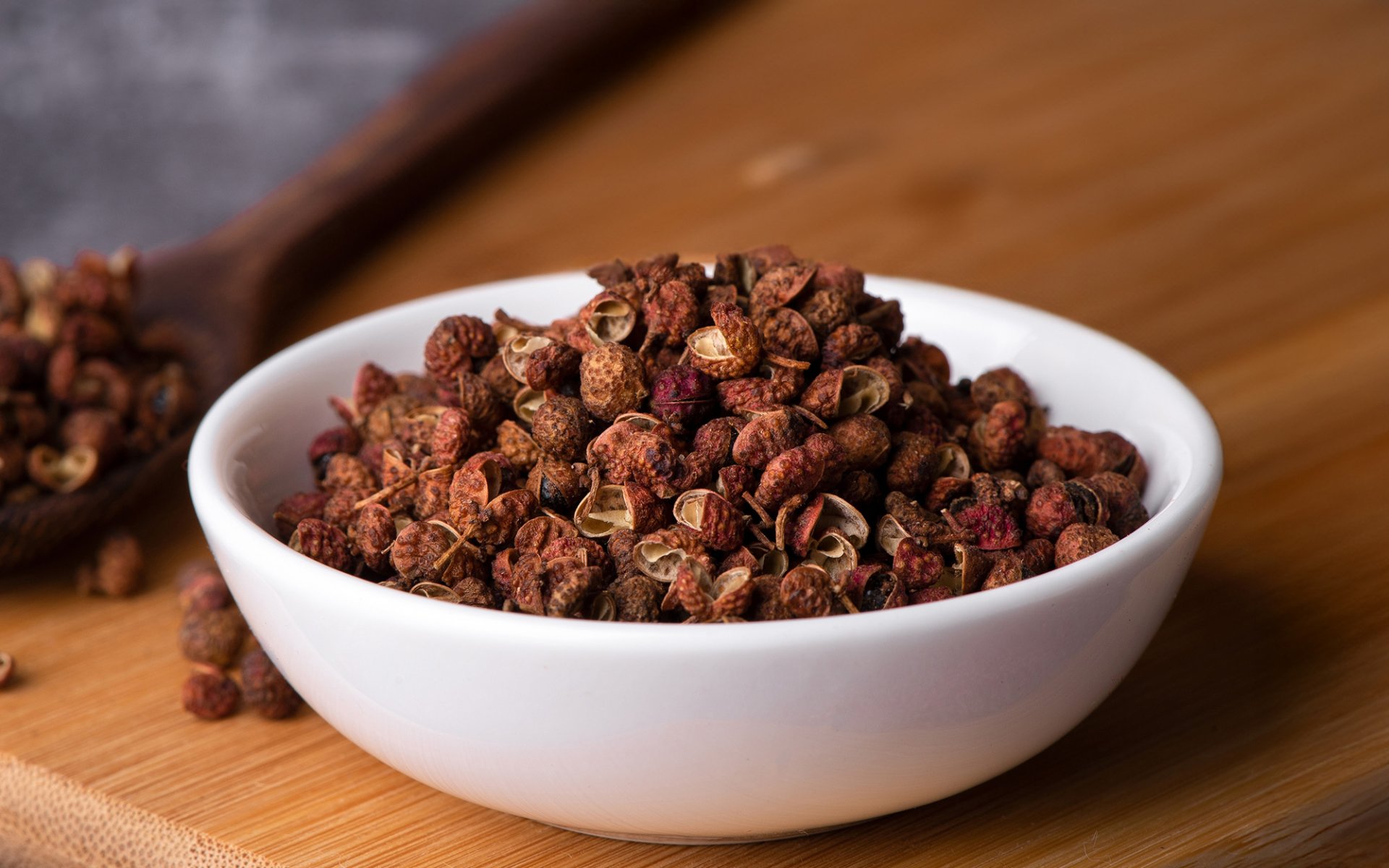Sichuan pepper

In Chinese culture, Sichuan cuisine is highly renowned for its rich and spicy flavors. This is because almost every Sichuan dish is seasoned with Sichuan pepper, or what the Chinese call Huājiāo (花椒), a spice originating from Sichuan Province in China.
Sichuan Pepper: A Pungent Tingle That's Not Chili
Sichuan pepper is a spice with a pungent and numbing taste on the tongue. But did you know that Sichuan pepper doesn't actually come from the chili plant family? Instead, it's a spice derived from the Zanthoxylum plant family. It has a cluster-like appearance similar to peppercorns, a rough texture resembling small kaffir limes, a strong aroma, and a spicy, numbing taste.
The distinctive characteristic of Sichuan pepper is the tingling and numbing sensation it produces on the tongue. However, this is not caused by capsaicin, as found in chili peppers, but by another molecule called sanshool. This molecule interacts with taste receptors in the mouth, causing a temporary numbing sensation. When cooked with heat, its aroma and flavor become even more intense.
Long History: From Medicinal Herb to Culinary Staple
The story of Sichuan pepper dates back thousands of years to the lush hills of Sichuan Province in China. Archaeological findings suggest that Sichuan pepper has been used since the Qin Dynasty (221 206 BC). However, in its early days, Sichuan pepper was primarily valued for its medicinal properties, believed to aid digestion, stimulate blood circulation, and relieve various ailments.
Over time, Sichuan pepper became an essential ingredient in Sichuan cuisine. It is often used to season almost all types of Sichuan dishes, including boiled, stir-fried, deep-fried, and grilled dishes. Prominent dishes featuring it include Sichuan Hotpot, Mapo Tofu, and the familiar Mala skewers popular in Thailand. Additionally, in the past, Sichuan pepper was also used to flavor tea and wine.
Varieties and Current Global Popularity
In China, Sichuan pepper is cultivated in several regions, with each area producing different aromas and flavors. It can be divided into two types: green and red. The red variety is suitable for grilling, while the green is ideal for boiled and steamed dishes. Sichuan Chinese commonly use both fresh and dried forms of the spice to season their food.
Currently, Sichuan pepper is gaining international popularity and spreading to restaurants worldwide, from casual eateries to Michelin-starred establishments. In Thailand, the most common dish featuring Sichuan pepper is undoubtedly Mala, which is available in various locations across the country.


